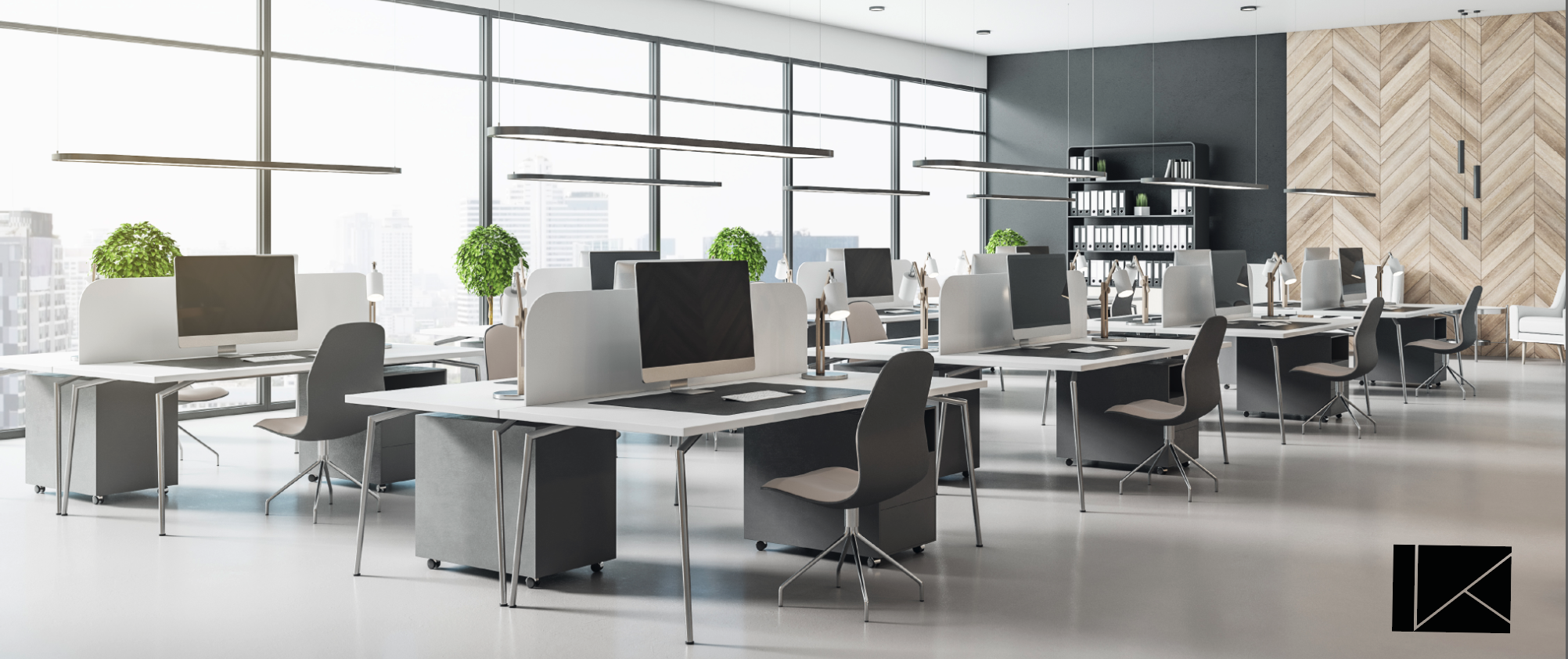
For years, the cubicle was one of the most dominant and easily-recognizable features of corporate office design. And cubicles are among the most divisive design elements still in use today. However, they are not the same as a workstation –– even if they share similar applications. Here, we’ll discuss the major differences between cubicles and workstations and outline several key emerging trends in workstation design:
Cubicles vs Workstations
The biggest difference between a cubicle and a workstation comes down to privacy. Cubicles are, by their very nature, private work areas. In other words, they have walls and workstations don’t. However, workstations aren’t just cubicles with the walls taken down. Often, workstations are engineered to accommodate multiple employees at a time. In addition, some organizations use workstations in open office environments to encourage frequent collaboration between employees.
Neither cubicles nor workstations are inherently better than the other. Cubicles can be a good option for professionals who value personal space and privacy, while workstations can help promote communication and togetherness. The decision to implement cubicles or less traditional workstations should be made on a case-by-case basis, depending on the unique needs and priorities of the company involved. It’s also worth noting that some organizations use a combination of cubicles and open work stations at the same time.
Office Design Trends
It would be unwise to ignore the potential long-term effects COVID-19 might have on workplace design trends. As we discussed in an earlier blog, businesses will likely look to maintain separation between employees in the office in the months to come; remote technology will also remain important even as restrictions are lifted.
However, flexibility may be the most substantial workplace design trend of the current moment. Businesses need to have versatile office spaces that they can change, alter, and rearrange on an as-needed basis. For many, office layout is no longer a static concept, but one that evolves somewhat frequently.
Workstation Design Trends
Personalization has become an increasingly visible aspect of workstation design in recent years. Since employees are now spending more time in the workspace, many employers encourage their staff to personalize their desks. It’s easy to understand why personal effects would improve the way an employee perceives their office environment.
Generally speaking, though, many workstation design elements are meant to encourage communication and teamwork between employees. Some office setups require professionals to jump from station to station depending on their project. And workstations should allow employees to communicate more freely without cumbersome cubicle walls in the way.
Striking the right balance between privacy and collaboration has always proved a challenge for interior office designers. As businesses begin to transition away from COVID-19 protocols, weighing the benefits of employee privacy against the need for quality communication has never been more important –– or complicated. The good news is that by working with design professionals, you can craft a workspace that allows your team members to perform at their best –– whether you prefer cubicles, workstations, or a combination of the two.
Contact Us
At Key Interiors, we’ll work with you through every step of the design process to create an office that you, your team, and your visitors will love. From initial design concepts, to build-out and implementation, our professional staff will be there with you to ensure your office redesign goes as smoothly as possible. Contact us here to learn more or to get started with us today.
